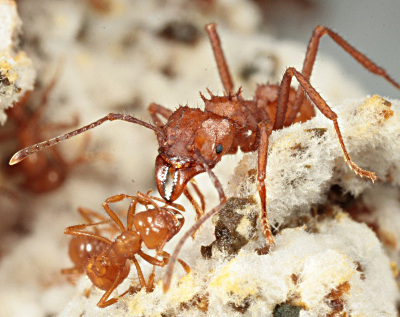Social insect workers typically do not lay their own eggs but would do anything (including sacrificing their lives) to support their queen. The queen is the only individual producing offspring. Worker that focus on working and do not bother with reproduction are simply more efficient at their job.
Once the queen dies, however, workers of some species begin to reproduce. Interestingly, researchers have observed that the reproducing workers also live longer than the abstaining ones. This mirrors the contrast between queens and workers: Queens live much longer than workers. Clearly something in the physiology changes when an individual begins producing eggs. Researchers speculated that this something also leads to longer lives.
In our experiments with three species of ants, we have tested whether reproducing workers are more resilient to oxidative stress than workers who do not reproduce. Oxidative stress can be dangerous when free radicals react with proteins, lipids, or DNA. In our experiments, experimental oxidative stress indeed killed the ant workers. In two species of leaf-cutting ants, the workers could handle oxidative stress better when they had lost their queen. However, only in one of these species would queen loss also lead to worker reproduction (Acromyrmex echinatior). In the other one (Atta colombica), the workers cannot produce viable offspring. They still survive oxidative stress better without a queen, which suggests that whatever changes in workers upon queen loss is not necessarily related to reproduction, but perhaps some other factor governed by the presence or absence of a queen.
Read more here:
Majoe, M., Liebbrecht, R., Foitzik, S., Nehring, V. (2021) Queen loss increases worker survival in leaf-cutting ants under paraquat-induced oxidative stress. Philos. Trans. Roy. Soc. B. doi: 10.1098/rstb.2019.0735
https://royalsocietypublishing.org/doi/10.1098/rstb.2019.0735
